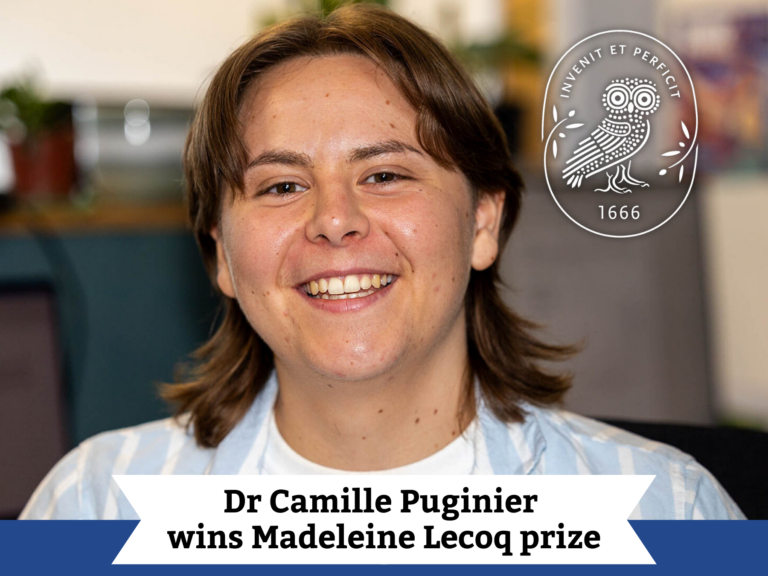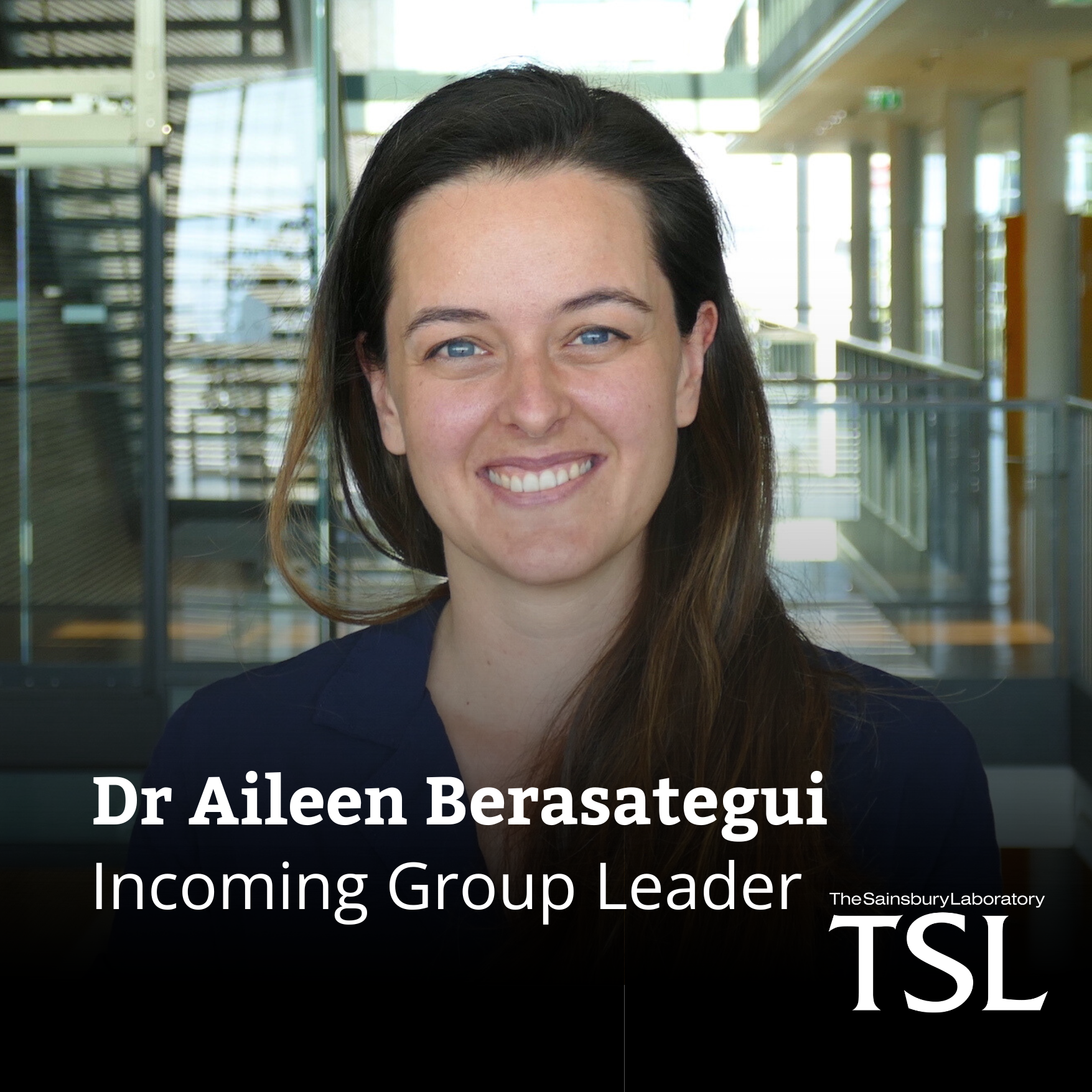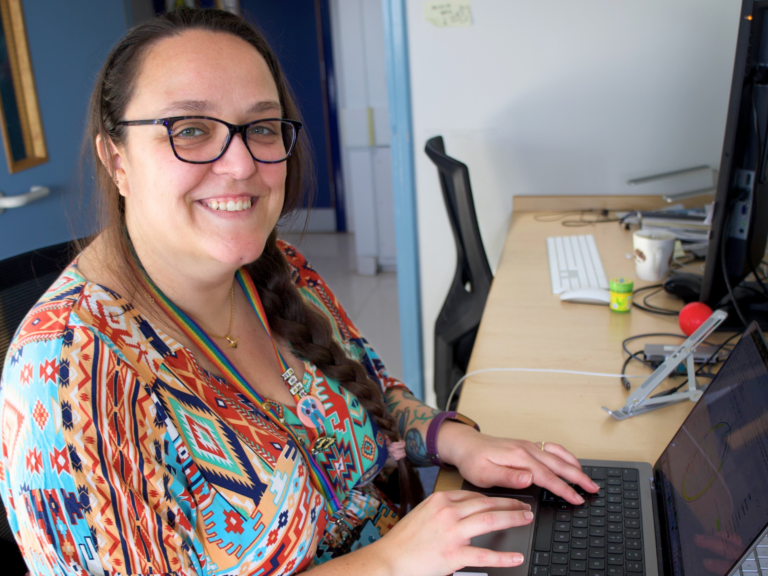The hidden roles of plant cells when pathogens invade
A new study reveals how plant cells work together to defend against bacterial infections, taking on different cell states to perform key tasks.
Tatsuya Nobori, now leading a research group at The Sainsbury Laboratory, conducted this research during his postdoc with Joseph Ecker's lab at Salk Institute. Using single-cell and spatial omics techniques to map the diverse immune states within plant leaves the authors were able to offer novel insights into plant defense mechanisms.

Image designed by Hsuan Pai, Research Assistant in Tatsuya's new group at TSL.
Plants may be rooted in place physically, but they show remarkable adaptability on a cellular level.
Lacking specialized immune cells, plants have evolved unique strategies where individual cells adopt new states to defend against pathogens. It has been difficult to study these cellular strategies using standard genomic and imaging tools but recent advancements in single-cell and spatial omics technologies have opened up a whole new door to expose the heterogeneity of plant-microbe interactions.
TSL's newest group leader, Tatsuya Nobori, is particularly interested in exploring these patterns which he focused on during his postdoc at Salk. Working with Joseph Ecker's research group, Tatsuya analyzed plant cell responses to bacterial infections with cutting-edge technologies, shedding light on diverse immune states in the model plant, Arabidopsis thaliana.
Through the integration of single-cell transcriptomics, epigenomics, and spatial transcriptomics, the team identified a large number of distinct cell states by gene expression and epigenetic modifications.
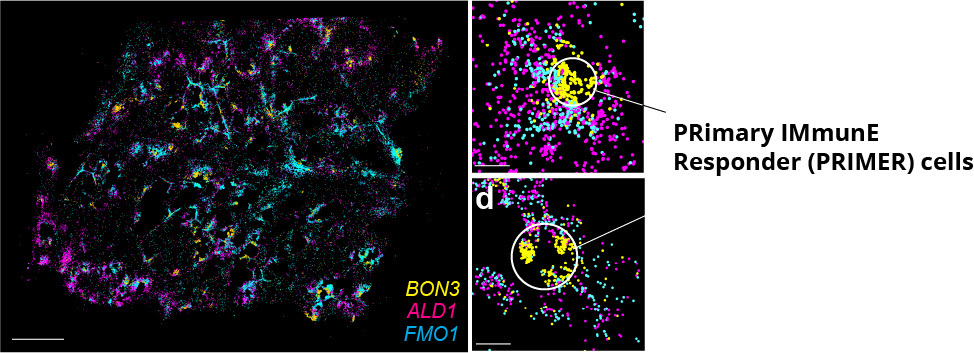
One of the key findings was the discovery of a rare cell population called PRIMER cells. These cells emerge at the center of immune-active hotspots and are potentially the initiator of plant defense responses. They express a previously uncharacterized transcription factor, GT-3a, which the team showed to regulate plant immunity.
Surrounding the PRIMER cells, another cell state, termed bystander cells, was identified. These cells activate genes involved in long-distance cell-to-cell signaling, potentially helping to spread immune responses across the leaf.
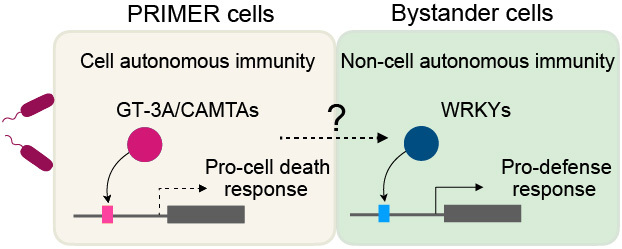
Tatsuya says, “I am really excited about the identification of various molecularly and spatially distinct cell populations, including PRIMER and bystander cell states. This finding reshapes our understanding of the plant immune system as a collective of diverse cell states, opening up numerous research questions—some of which my new group at TSL is already exploring.”
Now established at The Sainsbury Laboratory, the Tatsuya Nobori group sets out to explore the diversity and function of plant cell states by developing new strategies to interrogate specific cell populations.
Key research questions in Nobori group are:
- When and where diverse plant cell states emerge during pathogen infection?
- What are the functions of individual cell states?
- How are different cell states regulated?
- How do different cell states communicate with each other?

The Tatsuya Nobori Group at The Sainsbury Laboratory, 2024 (photo by Steph Bornemann)
